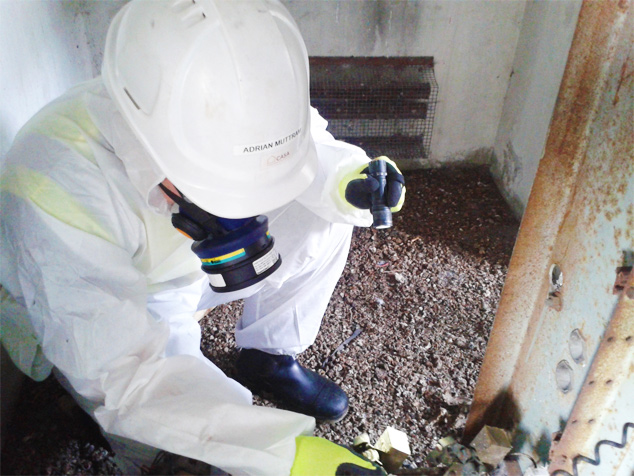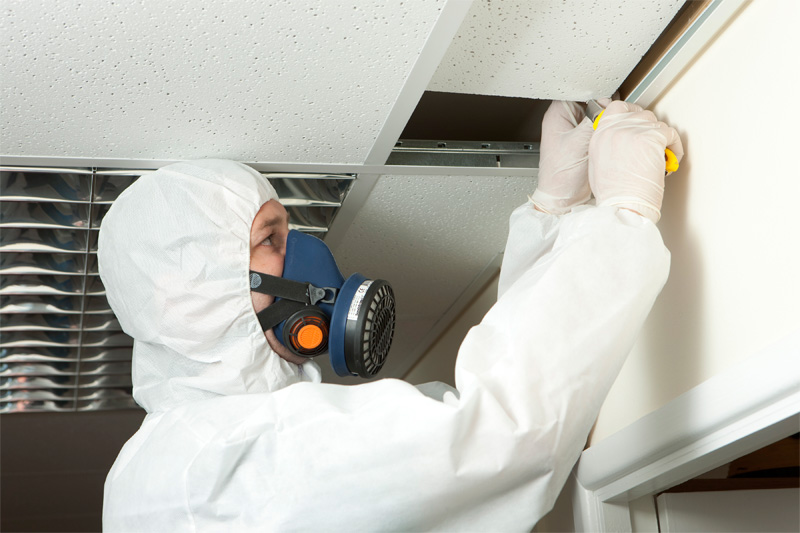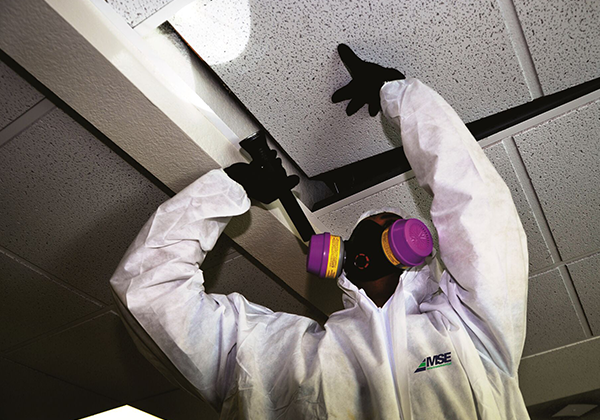Expert Tips for Performing Reliable Asbestos Checking in Buildings and Structures
In the realm of structure maintenance and safety and security, the importance of carrying out reputable asbestos screening in frameworks can not be overemphasized. From older household homes to commercial structures, the visibility of asbestos presents a significant wellness risk otherwise appropriately recognized and taken care of. Recognizing the nuances of asbestos screening, such as the different tasting methods and the critical distinctions in between do it yourself testing and expert services, is important for guaranteeing accurate outcomes. However, navigating the complexities of analyzing test results and executing reliable threat administration strategies can be a difficult job for many. It remains in these vital areas that professional support and suggestions can clarify ideal practices and ensure the security of passengers and employees alike.

Value of Asbestos Testing
Carrying out asbestos screening in structures and frameworks is critical for guarding the health and wellness of occupants and workers. Asbestos, when a prominent structure product understood for its fireproof homes, has because been connected to major health dangers, including lung cancer and mesothelioma.

Tasting Techniques
Asbestos testing in buildings and structures demands precise sampling methods to accurately assess the visibility and problem of asbestos-containing products. One typically utilized tasting method is the point checking approach, where samples are accumulated from numerous structure products suspected to have asbestos, such as insulation, ceiling floor tiles, or flooring. Using the right tasting methods is critical for getting specific asbestos screening results and ensuring the safety of occupants in buildings and frameworks.
Do It Yourself Screening Vs. Expert Provider
When taking into consideration asbestos screening for structures and frameworks, the choice in between do-it-yourself (DO IT YOURSELF) testing and specialist services is an essential choice that can influence the precision and dependability of the outcomes. Do it yourself testing packages are readily available for acquisition, providing a cost-efficient option for individuals check aiming to assess the existence of asbestos in their residential property. These kits usually include directions on exactly how to accumulate examples, which are then sent out to a laboratory for evaluation. While do it yourself testing may appear like a hassle-free selection, it is important to keep in mind that the results may not constantly be as precise as those obtained through professional solutions.

Interpreting Test Outcomes
The precision and integrity of asbestos examination results, whether acquired with professional services or Do it yourself testing, play a vital role in determining the next actions for handling possible asbestos hazards in buildings and structures. Test read the full info here results normally suggest the visibility or absence of asbestos fibers in the tested products, along with the concentration of asbestos present if it is identified. Proper analysis of asbestos examination results is critical for guaranteeing the safety and security of residents and employees in the building and conforming with asbestos regulations and guidelines.
Threat Administration Techniques
Properly executing aggressive risk management approaches is essential for protecting passengers and employees in structures with possible asbestos hazards (Asbestos Testing). To begin, carrying out complete threat assessments is crucial to determine the presence of asbestos-containing products (ACMs) and analyze the degree of danger they pose. This entails examining the structure, accumulating samples for screening, and evaluating the results to identify the appropriate strategy
When the visibility of ACMs is confirmed, it is very important to develop and implement a comprehensive monitoring plan that outlines procedures for taking care of and regulating asbestos threats. This strategy should consist of measures such as asbestos encapsulation, removal, or recurring monitoring to prevent direct exposure and reduce health and wellness risks. In addition, developing clear communication channels to enlighten residents and employees about the visibility of asbestos and the safety measures in position is essential for ensuring their security.
Regular tracking and review of asbestos threats are also crucial components of reliable risk administration strategies. By remaining proactive and vigilant, structure owners and managers can produce a secure setting and stop potential asbestos-related carcinogen.
Verdict
Finally, performing trusted asbestos testing in buildings and frameworks is crucial for identifying possible health risks and ensuring safety. By adhering to appropriate sampling techniques, thinking about the advantages of specialist services over do it yourself screening, interpreting test results properly, and executing effective risk management Asbestos Testing techniques, individuals can efficiently handle and mitigate the threats linked with asbestos direct exposure. It is crucial to focus on safety and abide by strict screening protocols to secure the health of passengers and workers.